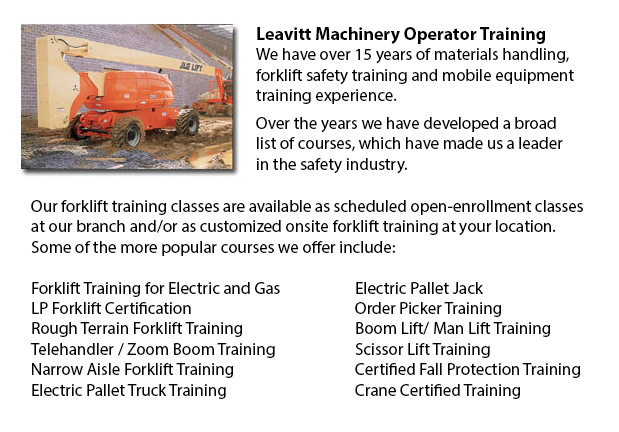
Boom Lift Safey Training British Columbia - Boom lifts are a type of elevated work platform or aerial lifting device which are usually used in construction, industry, and warehousing. Boom lifts can be made use of in practically any surroundings because of their versatility.
The elevated work platform is used to be able to enable access to heights that were otherwise not reachable using other means. There are risks inherent when using a boom lift device. Employees who operate them must be trained in the correct operating techniques. Avoiding accidents is vital.
The safety factors which are included in boom lift operation are covered in our Boom Lift Training Programs. The course is best for people who operate self-propelled elevated work platforms and self-propelled boom supported elevated work platforms. Upon successful completion of the course, Individuals who participated would be given a certificate by somebody authorized to verify the completion of a hands-on assessment.
To help train operators in the safe utilization of elevated work platforms, industry agencies, federal and local regulators, and lift manufacturers all play a part in establishing standards and providing the necessary information. The most essential ways to prevent accidents connected to the utilization of elevated work platforms are as follows: conducting site assessments; inspecting machines; and putting on safety gear.
Important safety factors when operating Boom lifts:
Operators should observe the minimum safe approach distance (MSAD) from power lines. Voltage could arc across the air to find an easy path to ground.
A telescopic boom should be retracted prior to lowering a work platform so as to maintain stability as the platform nears the ground.
People working from the platform of a Boom lift must tie off in order to guarantee their safety. Safety harness and lanyard combinations should not be connected to any anchorage other than that provided by the manufacturer, never to other wires or poles. Tying off may or may not be necessary in scissor lifts, which depends on specific local regulations, employer guidelines or job risks.
Avoid working on a slope that goes beyond the maximum slope rating as specified by the manufacturer. If the slop exceeds requirements, therefore the machinery must be winched or transported over the slope. A grade could be simply measured by laying a minimum 3-feet long straight board or edge on the slope. Then a carpenter's level can be laid on the straight edge and the end raised until it is level. The per-cent slope is obtained by measuring the distance to the ground (likewise known as the rise) and dividing the rise by the length of the straight edge. After that multiply by 100.
-
Warehouse Forklift Safety Training British Columbia
Warehouse Forklift Safety Training British Columbia - The corporation would face claims for liability when damage and injuries are sustained in an accident at the workplace. Warehouses can be a hazardous place to work for its workers, making employee... More -
Loader Operator Certification British Columbia
Loader Operator Certification British Columbia - Courses Offered For Getting Loader Operator Certification - Certification for forklifts are required to guarantee the safe operation of forklifts for those employers in industrial, warehouse or constru... More -
Crane / Overhead Crane / Self-Erect Crane / Truck Mounted Crane / Hydraulic Cranes Training in British Columbia
Bridge cranes or likewise called overhead cranes are actually a type of industrial material handling crane making use of a line and hook device that runs on a horizontal beam running along two widely separated rails. Numerous overhead cranes could be... More -
Scissor Lift License British Columbia
Scissor Lift License British Columbia - The operation of scissor lifts carries an inherent chance of danger. Whichever type of powered machine requires correct handling to prevent accidents causing injury or damage. Companies need to make certain tha... More -
Heavy Equipment Training Schools British Columbia
Heavy Equipment Training Schools British Columbia - There are a lot of heavy equipment training schools to select from. If you want to get to the best, it is important to check various aspects of the school in order to ascertain the level of educatio... More -
Telehandler Training British Columbia
Telehandler Training British Columbia - Telescopic handlers usually called telehandlers for short, are an extremely popular piece of heavy construction equipment. They are commonly utilized in the construction and agricultural trades. These machines... More -
Forklift Training Courses British Columbia
Forklift Training Courses British Columbia - When forklift operator safety training is tailored for illiteracy, training time is lessened by 50%. Forklift training certification, lift-truck operator driver safety training evaluation, and train the tr... More -
Heavy Equipment Operator Training British Columbia
Heavy Equipment Operator Training British Columbia - Heavy equipment operator training facilities which provide quality standards in the business, providing field performance work and added machinery training are highly sought after training features... More

Forklift Training British Columbia
TOLL FREE: 1-888-254-6157
forklifttrainingbritishcolumbia.com
Email Us
About Us


